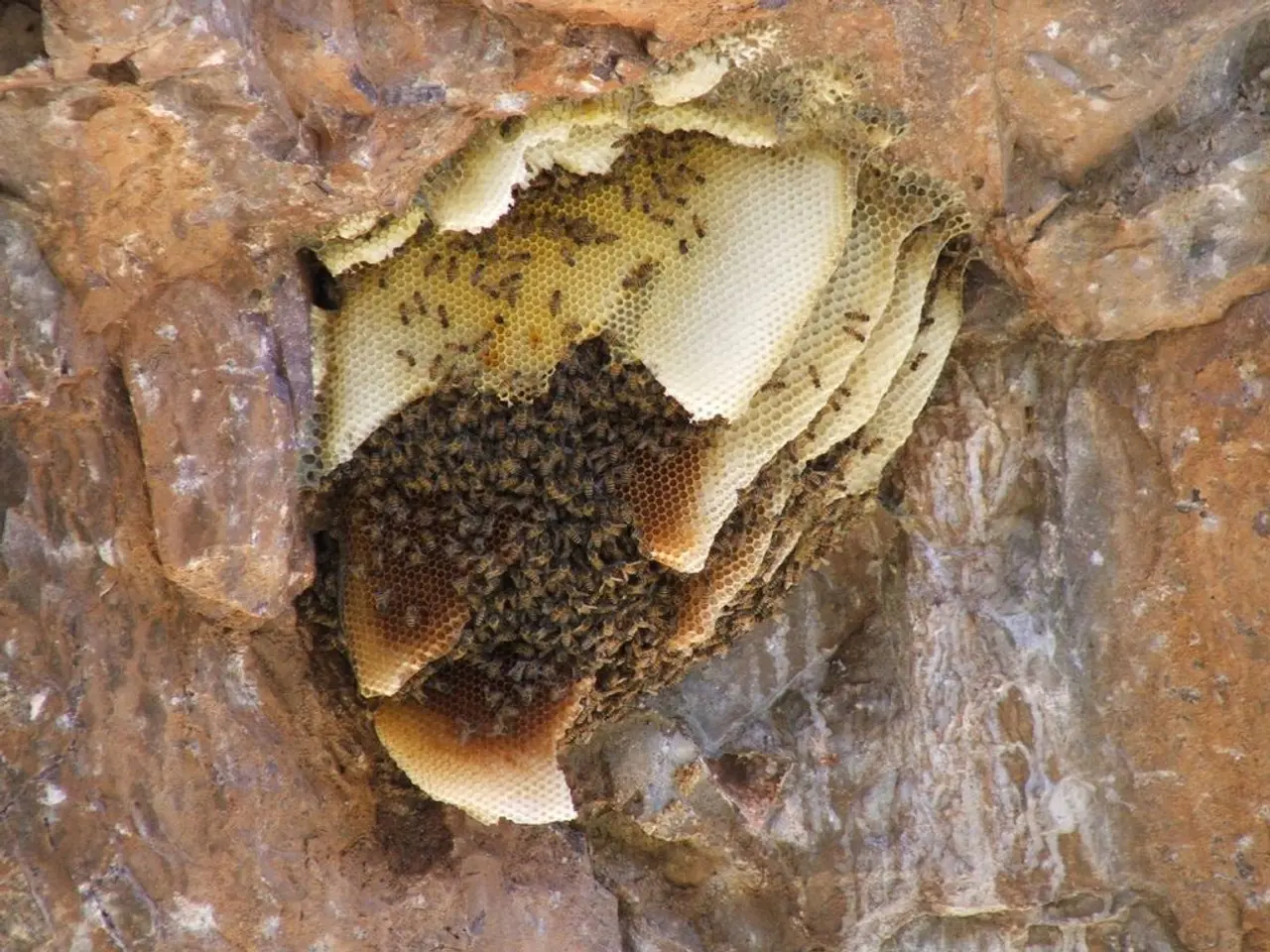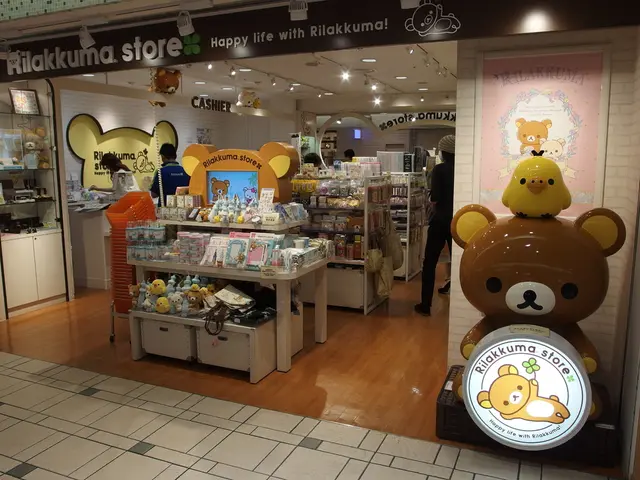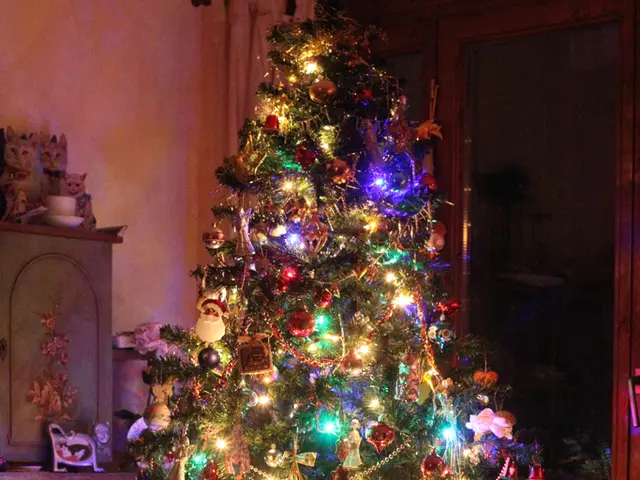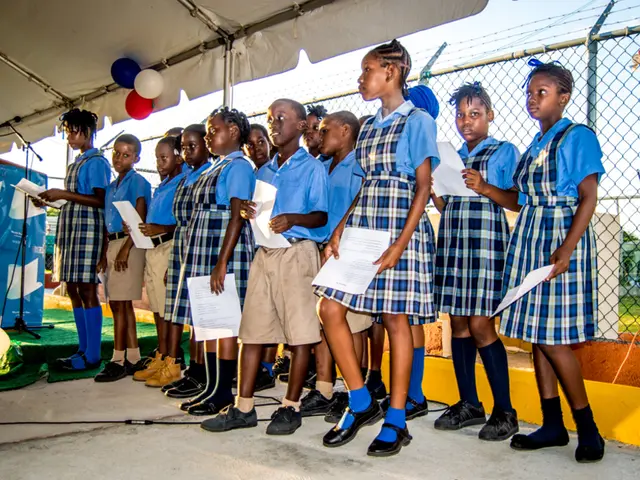Sandringham experiences overpopulation of wasps - Wasp population escalating in Sandringham
King Charles III Battles Unusual Wasp Infestation at Sandringham Estate
The Sandringham estate, home to King Charles III, is currently grappling with an unusually high wasp population this year. This issue, however, is not limited to Sandringham but is a broader problem across the UK.
To manage the infestation, the estate has taken a multi-faceted approach. Public signage has been erected near bins and visitor areas, warning of high wasp activity and advising caution. Rubbish bins have been sealed with plastic and covered with cloth to minimise wasp access to food sources.
Professional pest control experts have been called in to remove major nests, and beekeepers in protective gear have been employed to safely manage the wasp situation. Ongoing monitoring is also being carried out, especially given the importance of beekeeping to the royal family, who also maintain bee colonies at other royal residences.
The estate has seen multiple large wasp nests, especially near key areas like the Royal Stud where the King's racehorses are kept. This necessitated specialist interventions to control the infestation.
In July, at least three wasp nests were removed from the Sandringham estate by pest control. King Charles III has also set up plastic wasp traps on the estate to capture and relocate the wasps. The traps are intended to reduce the number of wasps on the approximately 20,000 hectare Sandringham estate, but they are not intended to harm the wasps, reflecting the King's love for nature.
The infestation has been reported by "The Sun", and it is located on the Sandringham estate in Norfolk, England. The number of wasps and bees has skyrocketed across the UK due to the driest spring in 50 years, which has contributed to these insects thriving in warm conditions.
Queen Camilla also noted the situation as "terrible," affecting daily life at Sandringham, with wasp and bee swarming problems extending to her own bees at her Wiltshire home. Warning signs have been posted around Sandringham House, asking visitors to be careful near trash cans due to high wasp activity.
As the management team at Sandringham continues to deal with the wasp infestation, they are relying on a combination of public communication, physical deterrents, professional pest control, and beekeeper expertise to cope with this unprecedented wasp activity. Visitors are being warned to take extra care during their visits to the estate.
The Commission has not yet adopted a decision on the application of Article 93 (2) of the Treaty, but one can imagine King Charles III, while battling the unusual wasp infestation at Sandringham Estate, advocating for outdoor-living and home-and-garden practices that are friendly towards wasps and bees, as part of a royal initiative to promote biodiversity and harmony in nature. With the excessive wasp population this year, his beautiful estate not only serves as a royal residence but also an excellent case study for sustainable home-and-garden lifestyle choices that help accommodate and coexist with these insects.




